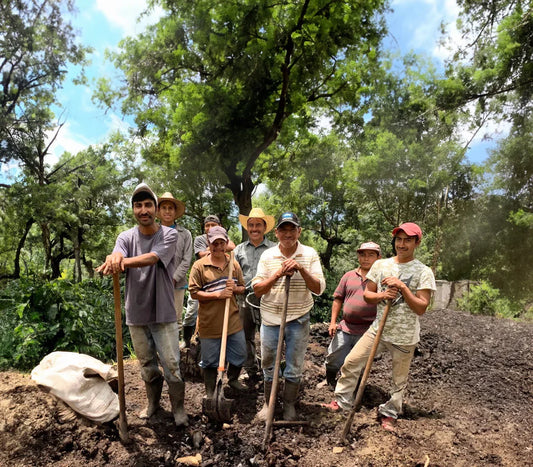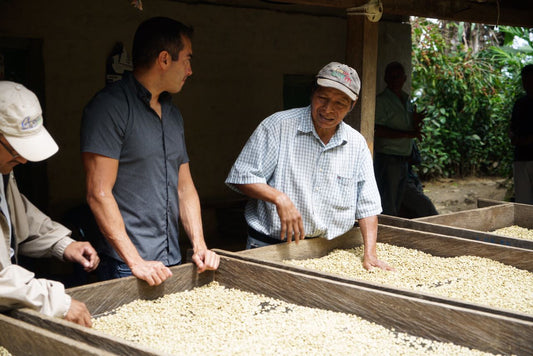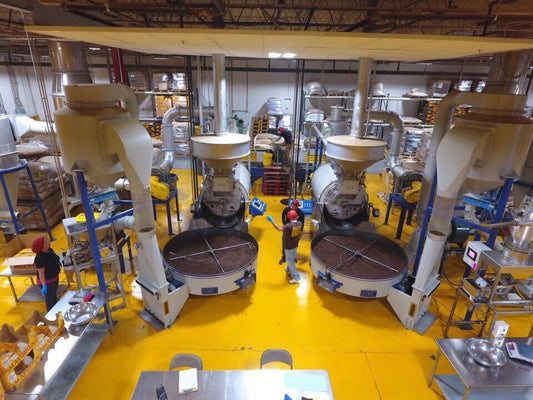
Coffee Chronicles: Colombian Coffee Culture Through the Ages
Three generations of Colombians spill the beans on how coffee culture in our country has changed over the years.
If not for hindsight, we would be hard-pressed to believe that a Jesuit priest smuggling in a coffee plant in 1723 would bring about a boom of economic development for what is now known as Colombia.
Since then, a whole culture has emerged around the bean which is deeply ingrained in our identities. A culture that has, just like all other cultures, evolved over time. These changes have been witnessed by generations of Colombians whose lives are intertwined with the bean from crop to cup.
A Lifetime of Coffee
Reinaldo Perilla, 62, has been involved with coffee in one form or another his entire life and he recounts stories of growing up on coffee farms playing under the shade of the trees.
As a kid, his routine consisted of going to school until noon, doing homework and then picking coffee cherries. As a teenager, he helped grow coffee on his family’s farm, which would later be exported to Japan and Germany.
Today, Reinaldo manages a property that also grows coffee and is actively involved in the entire cycle.
To this day, his go-to drink is tinto con panela. His memories of previous decades are full of the aroma of beans being roasted on a pan on the stove and of more artisanal processes that have now given way to machinery in the name of efficiency.
"It’s not bad, it’s progress," Reinaldo says, "but it can affect small farms."
This leads to his thoughts on what can be improved in the industry: better care and support for the small farmers as they are the backbone of the economy.
Inflation and increases in the cost of supplies have led many to give up coffee farming and turn to tourism, Reinaldo explains, noting that he has seen this first-hand in his home town of Quindío, which "doesn’t produce even 30% of the coffee it used to produce previously".

Coffee's Transition Through the Ages
Óscar Daza Bautista is a third-generation coffee grower in the department of Santander, municipality of Aratoca.
His grandfather started farming, then in the 1970s his father bought Finca La Pradera. But since the soil was semi-arid, they first had to plant transitory crops such as plantain, cassava, corn, and tobacco.
"Later, in the 1980s, my family managed to come up with new cultivation theories and training through the group of extension workers of FNC and there was a change in the approach," he says.
"That is to say – they began with the sowing of transitory crops and, when they finished in that same year, the coffee was planted in the shade.
"In the 1990s, the area became very attractive for poultry projects and became full of farms. So, he managed to sell organic material and, in this way, he expanded production a little more. From a quarter of a hectare, he went on to plant two hectares between the 1990s and 2000."
When Covid-19 hit in early 2020, they had to be transformed with state-of-the-art machinery and fermentation processes.
Currently, Óscar says that they are very proud to have a 100% sustainable coffee farm, which is environmentally friendly and has a key social component.

A New Coffee Community
Esteban Cristancho, who is in his twenties, moved to Florida from Bogotá when he was seven years old. But just like Reinaldo and Óscar, coffee has permeated his life.
He remembers growing up with coffee being served at all times, from breakfast to after dark.
His first memory of the drink was when he was around five years old: it was bitter and sweet. It wasn’t until he was in high school and he began frequenting a specialty coffee shop that he started to take an interest in the drink.
Now, as a manager of Elevation Coffee, he states that his "entire life revolves around coffee". It gave him his friends, partner and employment. As such, the community aspect of the industry is most important to him.
While his first taste of coffee was Sello Rojo, these days he has access to various specialty coffee and enjoys natural Ethiopian coffees prepared with a V60 the most.
But like many baristas in the US, he is faced with the issue that plagues young coffee professionals: "There aren’t a lot of growth opportunities and it is easy to get burned out," Esteban notes.
Still, he dreams of one day owning a shop and where he can help people use coffee as a creative outlet.
These three Colombians are a small representation of the coffee culture in Colombia, one that's full of passion and pride for this famous crop. And one that’s striving to continually do better not only with the beans themselves but also as a community that relies on one another and the preservation of this long tradition.


